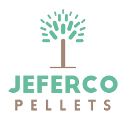Glossaire GB
ICPE (« Installation classée pour la Protection de l’environnement »)
The agreement to operate sets the requirements to be followed by the operator, the analysis means and measures, the intervention means in case of disaster, but also recalls the whole of the regulation concerning in particular
- The environment;
- Releases (air quality included);
- Acoustics
Also take into account
- hygiene and safety requirements for staff;
- Local planning rules;
- compensatory measures.
PEFC (Pan European Forest Certification)
Environmental standard that is 15 years old.
Of European origin, its aim is also to promote sustainable forest management. It is more suited to European specificity and its forest fragmentation, is coming from wood industry and is less restrictive: it is more a commitment to continuous improvement. That is now the world leader with 264 million hectares in 39 countries.
Recycled wood
these are all the woods recovered at the end of their life and after the second transformation, both industrial and from the building sector; they are systematically ground to facilitate their use and transport.
For common use (and non-regulated), class A wood and Class B wood are used with the following definitions:
- Class A wood (untreated wood):
By-products of the second processing of raw and dry wood.
This category of wood is mainly re-use in the panels and heating plants. - Class B wood (poorly treated):
panels, wooden furniture, deconstruction woods,… free of building waste, logging residue (tree stumps, logs, etc.).
This category of wood had only panels as a possibility of re-use. It is now also used for heating plants. - Class A/B wood
A mix of Class A recycled wood at 60% and recycled Class B wood up to 40% for the panel industries
Energy wood
These are the woods used for home or district heating in the form of logs or domestic wood chips or domestic pellets.
Green waste wood
These are the residues of different sizes that individuals, professionals and local authorities collect from their hedges, shrubs and ornamental trees.
The term “green” indicates that this waste is very wet.
Industrial wood
all parts of the tree are not usable in logs (trunks) such as Lumber or Energy Wood.
There are mainly the panel and paper industries, which grind them before use.
Wood pellet
It comes in the form of a small cylindrical stick of sawdust compacted from 3 to 4 cm in length with a diameter of 6 to 8 mm. Its water content is less than 10%.
There are different qualities of wood pellets depending on its use (domestic or industrial).
Mainly used as an energy source for heating, wood pellets are also used as animal litter.
Wood chip
The wood chip is got from grinding the leftovers of a logging operation or small diameter wood or low-quality wood, which is often the only possible recovery.
The wood chips are small pieces of wood of about 2-2-5 cm. Its water content ranges from 25% to 35% for small private boilers, and 40-55% for large industrial boilers.


